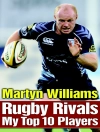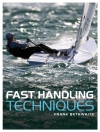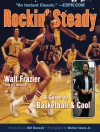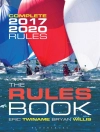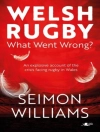Examines the relationship between gay male athletes, sport, and American masculinity.
2005 CHOICE Outstanding Academic Title
Using interviews with openly gay and closeted team-sport athletes, Eric Anderson examines how homophobia is reproduced in sport, how gay male athletes navigate this, and how American masculinity is changing. By detailing individual experiences, Anderson shows how these athletes are emerging from their athletic closets and contesting the dominant norms of masculinity. From the locker rooms of high school sports, where the atmosphere of ‘don’t ask, don’t tell’ often exists, to the unique circumstances that gay athletes encounter in professional team sports, this book analyzes the agency that openly gay athletes possess to change their environments.
विषयसूची
Acknowledgments
Introduction
Overview
Outline
1. Warming Up
The Link between Sport and Homophobia
Methods
2. Sport, Masculinity, and Hegemonic Oppression
One Athlete’s Story: Dale, High School Football Player
Masculinity as Hegemonic Oppression
Masculine Capital, Orthodox Masculinity, and Hegemonic Masculinity
Maintaining Masculinity: Homophobia at Work
Hegemonic Masculinity in School Culture
Problematizing Sport Culture
Sporting Hegemony and Gay Athletes
3. The Relationship between Gay Athletes and Sport
One Athlete’s Story: Aaron, Closeted NHL Player
The Relationship between Gay Athletes and Sport
Gay Athletes: Challenging Masculine Domination
Representation of Gay Athletes in Sport
4. Systems of Masculine Reproduction
One Athlete’s Story: Terry, Retired Closeted NFL Player
The Structure of Sport
Sport as a Near-Total Institution
Sport as a Gender-Segregated Institution
Sport as a Closed-Loop Institution
5. Coming Out in Sport
One Athlete’s Story: Blake, High School Basketball Player
Fear of Coming Out
Coming Out in Sport
Feelings of Liberation
Reverse Relative Deprivation
Homophobic Discourse
The Evolving Coming Out Story
6. Mitigating Gay Stigma
One Athlete’s Story: Bob, Collegiate Track Star
Using Masculine Capital to Mitigate the Stigma of Being Gay
Increasing Masculine Capital through Performance
The Effect of Masculine Capital on Coming Out
Adopting All Other Tenets of Orthodox Masculinity
7. Don’t Ask, Don’t Tell: Resisting a Culture of Gay Athleticism
One Athlete’s Story: John, High School Basketball Player
Don’t Ask, Don’t Tell
The Price of Don’t Ask, Don’t Tell
8. Factors That Influence Acceptance
One Team’s Story: The Troubadours Cheerleading Team
Factors That Influence Homosexual Acceptance
The Coach
Social Support Networks
Institutional Attitudes
The Intersectionality of Race and Coming Out
Nature and Origin of the Sport
Other Factors
9. The Center of Masculine Production: Gay Athletes in Professional Sports
One Athlete’s Story: Steven, Closeted NFL Player
Professional Sports
The Relationship between Professional Athletes and Homosexuality
Professional-Sized Fear
Professional Pressure
Gay Athletes and the Sport-Media Complex
The Employer
Cracking the Center
10. Doing Something about It
Research Findings
Factors in a Positive Coming Out Experience
How to Come Out to Your Team
Avoiding the Bisexual Trap
After Coming Out
Dealing with Uncomfortable Situations
On Being Attracted to Your Teammates
When Things Don’t Go Well
The Importance of Comebacks
Specific Issues for Gay Coaches
Handling the Privacy Issue
Warming Down
Notes
References
Index
SUNY Series on Sport, Culture, and Social Relations
लेखक के बारे में
Eric Anderson is Lecturer on Sociology at Stony Brook University, State University of New York and the author of Trailblazing: The True Story of America’s First Openly Gay Track Coach.



